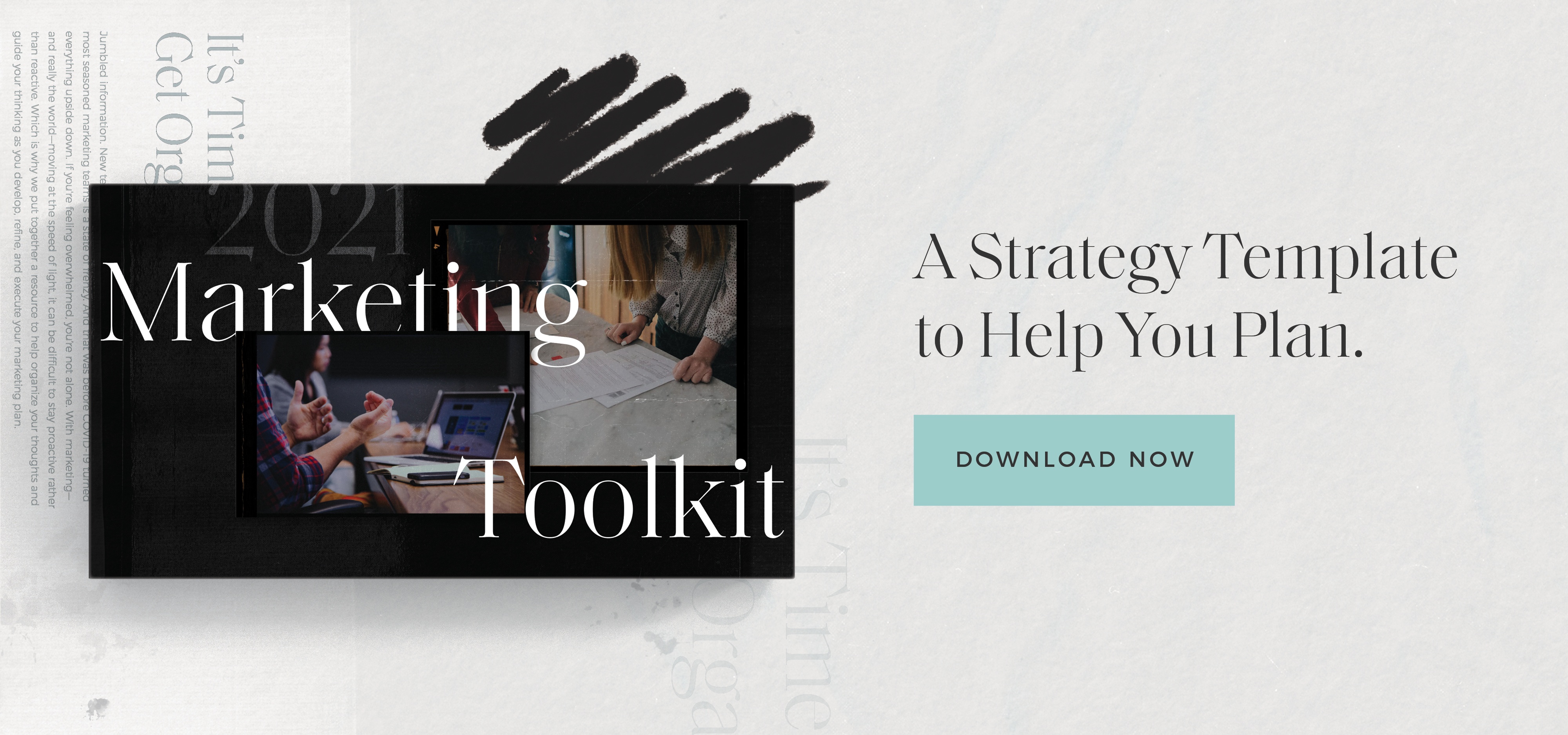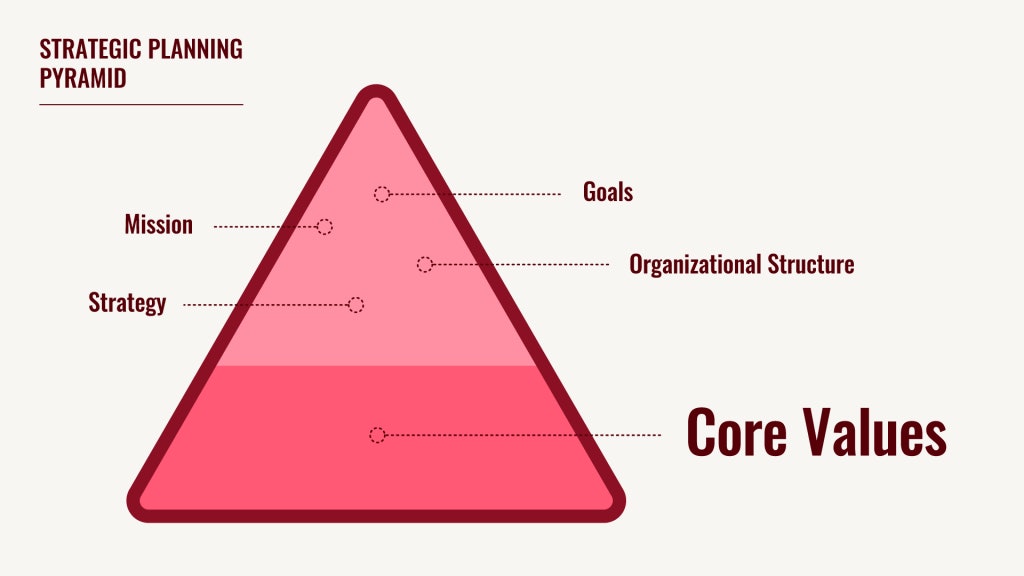I am going to write three words that pop up constantly when companies try to define their purpose and then I am going to guess your reaction(s).
Mission. Vision. Values.
My guess is that you immediately did one or more of the following:
- Had a visceral reaction and maybe even shuddered a little
- Rolled your eyes
- Let out a big sigh
- Stopped reading this blog and walked away (with or without your hands thrown in the air) saying “oh no, not this again!”
Am I right? I bet I am because my reaction is a quick rotation through all of these. It’s the same reaction series I have to other corporate buzzwords such as “kaizen,” “there is no ‘I’ in team,” or “let’s take this off-line.”
So how about I promise to make this painful discussion helpful and worth a read? I will even go so far as to promise to focus only on one of these concepts…values. Organizational core values, to be specific, and how to define them. If you can nail this, the rest will flow organically.
Trust me, I have been studying ways to make the process of defining core values less painful and more meaningful for more than two decades. And it’s worth it—smart organizations are the ones that can create authentic core values and follow them unerringly.
Learning from the experts
First, I will reveal my sources, because while I am admittedly pretty smart, I am not omniscient on this topic, and we can all use some expert support now and then. Much of what you see in the process of developing our core values at Element Three came from a few important and extremely helpful resources.
- The Advantage, by Patrick Lencioni
- Traction, by Gino Wickman
- Mastering the Rockefeller Habits, by Verne Harnish
- Get a Grip, by Gino Wickman and Mike Paton
If you are looking for a place to start with creating a strategic plan for your business, I recommend becoming a student of these teachers first. They will lead you to a whole new world of applicable tools for your journey.
Understanding the stakes
Back to core values. If you envision a planning pyramid for your strategic plan, your core values serve as the foundational layer, the layer upon which everything else is built.
In Get a Grip, you will read that “vision without traction is hallucination.” Your core values provide the base layer of traction as you build your plan. Values provide the stable foundation upon which the rest of the vision is built.
That sounds like a lot of pressure. How do you even begin to construct something so important, so fundamental, and so defining? That’s exactly what I thought when we started this process. But the answer is surprisingly simple.
When it comes to core values, authenticity rules
In his book The Advantage, Patrick Lencioni says to “think of your core values as a few behavior traits that are inherent in the organization. They lie at the heart of the organization’s identity, do not change over time and must already exist. In other words, they cannot be contrived.”
This was helpful in our process as it pushed us to start with what we already knew about our company and made us think very intentionally about the difference between aspirational values (characteristics we want to have or wish we had) and the identification of our core values (what is natural or inherent to our organization).
Five steps to defining your company’s core values
To define our own core values, we took a little bit of inspiration from each of the sources I mentioned earlier and combined them all into a process that suited our needs and our unique situation and culture. Here’s how we went about defining core values at Element Three:
Step 1: Set expectations
Gather your key leaders and make sure you all understand what core values mean for your company—that they are a small set of essential, enduring principles that define your culture. A list of three to seven is the rule of thumb, and less is more.
If your decision-making core isn’t all on the same page from the outset, you’re probably going to struggle to come to an agreement on what the final core values should be. This is a process that’s too important to allow for any confusion or misunderstandings, so make sure you’re setting clear expectations.
Step 2: Find your role models
Have each of your leaders make a list of three people at your company who are true superstars. These are the people you love, they fit the culture and you wish you could clone them.
Ideally, these aren’t three people at the immediate table—it’s not the president of the company, but members of the rank-and-file who represent what your ideal employee would look like.
Step 3: Determine what makes them special
Assemble a full list of all of the names the leadership team came up with, and add tick marks for those selected by more than one leader.
Once you have your list, ask each leader to make a list of the characteristics, attributes, or traits that make their picks valuable. List all of the words on a whiteboard. What makes someone a model member of your organization? This is the time to figure it out.
Step 4: Winnow down your list
Use the “Keep, Kill, and Combine” process of elimination. As Gino Wickman states in Traction, “Your organization’s core values are somewhere in that long list you’ve just created. Now, narrow it down.”
In your first round of edits, circle the ones that are truly important, draw a line through the ones that are not, and combine those that are similar. Keep going until you have a list of ten to 15 options left.
Step 5: Final decisions
Now it’s time to make the tough decisions. Discuss, debate, and decide which of the values that are left are truly core to what your organization is and what you do.
Get it down to three to seven core values that are cohesive together and represent your business. Once your leadership cadre is happy with what’s left, congratulations—you’ve successfully identified and defined your organization’s core values.
Some advice: Don’t rush the process
This process can be exhausting, so once you have succeeded, your first instinct is probably going to be to run out and share them with the world.
Don’t.
Let it simmer for a few weeks and meet one last time with your leadership team to do a final review and sign-off. Communicating your core values to the organization in the right way is critically important, so make sure you have a clear delivery plan to roll them out. Tell stories around your core values to make them come to life. Find ways to incorporate them into your culture, your space, and your daily interactions, and revisit them regularly to keep them alive.
Most importantly, make sure your core values are consistently represented by the leaders of your organization because leading by example will make or break the integrity of those values and, in turn, your entire strategic plan. If your leaders cannot live your core values every day, they become aspirational values, not real values, and you need to go back to the drawing board and start again.
Our core values
At Element Three, we went through this process and the following core values emerged: Awesome Comes Standard, Business First, Emotional Intelligence, Stay Curious, Transparency, Creative Swagger, and Own Selflessly.
Recently, we’ve adjusted those original seven into six that we believe are true to who we are today. They include:
Look to Truth
See the real problem—then solve it. Eliminate bullsh*t. Build trust transparently. Honor the confidence clients place in us and advance the cause with conscience. Keep it real with others and with yourself.
Decide Business First
Focus on business results—for our clients and Element Three. Know and own the business impact of your decisions.
Say ‘Yes’ to Hard Things
Greet challenges enthusiastically. Participate courageously. Put in the work and learn through doing. Embrace discomfort. Resist quitting on others. Find humor in the struggle. Know that repetition leads to expertise.
Practice Emotional Intelligence
Bring your best energy into every room. Be fully present. Listen thoughtfully. Challenge constructively. See things from others’ perspectives.
Delight with Excellence
Make the day for someone. Create consistency and impact—in big and small ways.
Get It Done
Come through for people and projects so often that it would be impossible to believe if you didn’t.
We post these values in a number of places in our organization, we review them regularly with the team, and we live them every day through a number of internal programs focused on recognizing these values in others. Once these core values were established, we were able to build the rest of our strategic plan with confidence.
Find your own truth
You’re probably not going to end up with exactly the same core values that we did. That’s true even if you’re reading this as a decision-maker at another marketing consultancy—we might just be a little different in terms of our personality or our culture no matter what industry your business is in. But the process of defining core values for your organization will lead you to find your own truth, and determine the perfect distillation of what your organization truly is.







